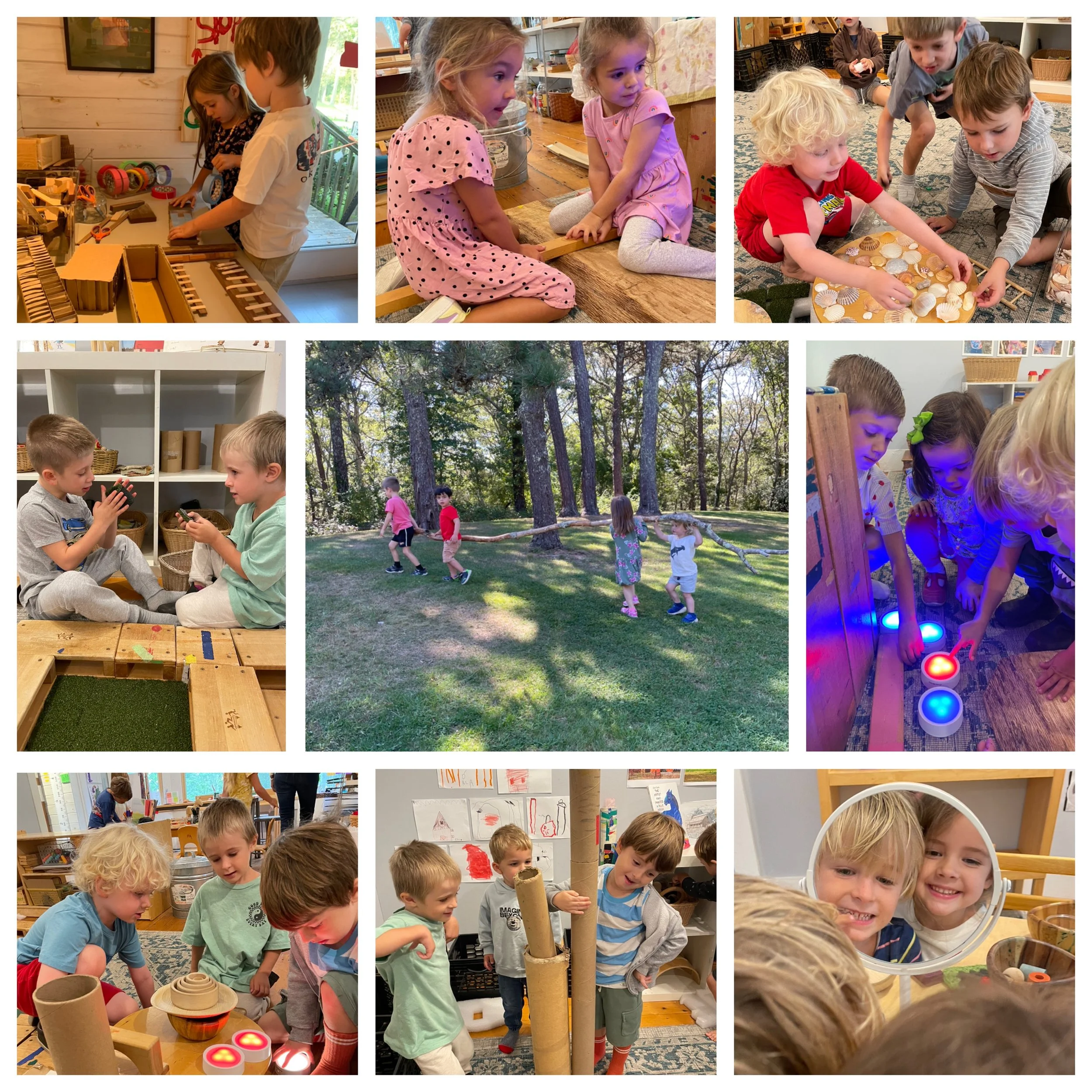Building Community through Play: Establishing Belonging
As we move from “Home to School” to “Coming Together”, our curriculum focuses on establishing a classroom community where everyone feels a sense of belonging and value. Specific project work will emerge, but at this point in the year, belonging is established through play. Respecting independent play, setting up materials that invite parallel play and supporting children’s collaborative work are the building blocks of our work at Garden Gate.
Our school day begins at 8:00 with purposeful play. Children choose materials and playmates. According to the National Association for the Education of Young Children, when children choose how to play for themselves, they experience freedom in making those choices. They also begin to see connections between choice and the consequences or results of that choice. Children have a natural impulse to play and it is this intrinsic motivation that allows a child to regulate her own feelings and desires in order to keep playing. Because children eventually find it more important to be part of play with their friends than to satisfy their own wants and needs at that moment, children learn self-control. In our open-ended classrooms, where play is supported in full, children have the security and safety they need to experiment, try new ideas, and investigate the laws of nature. Play is spontaneous, not scripted. This sense of the unknown provides children with opportunities to develop flexibility in their thinking and decision making, which is a vital life skill.
In play the children grow in understanding of themselves and others and experience it in JOY. In this context, we are able to set the foundation for a welcoming, fair and democratic classroom, introducing children to their roles within our school community and establishing the rules and agreements for working together as a group.





